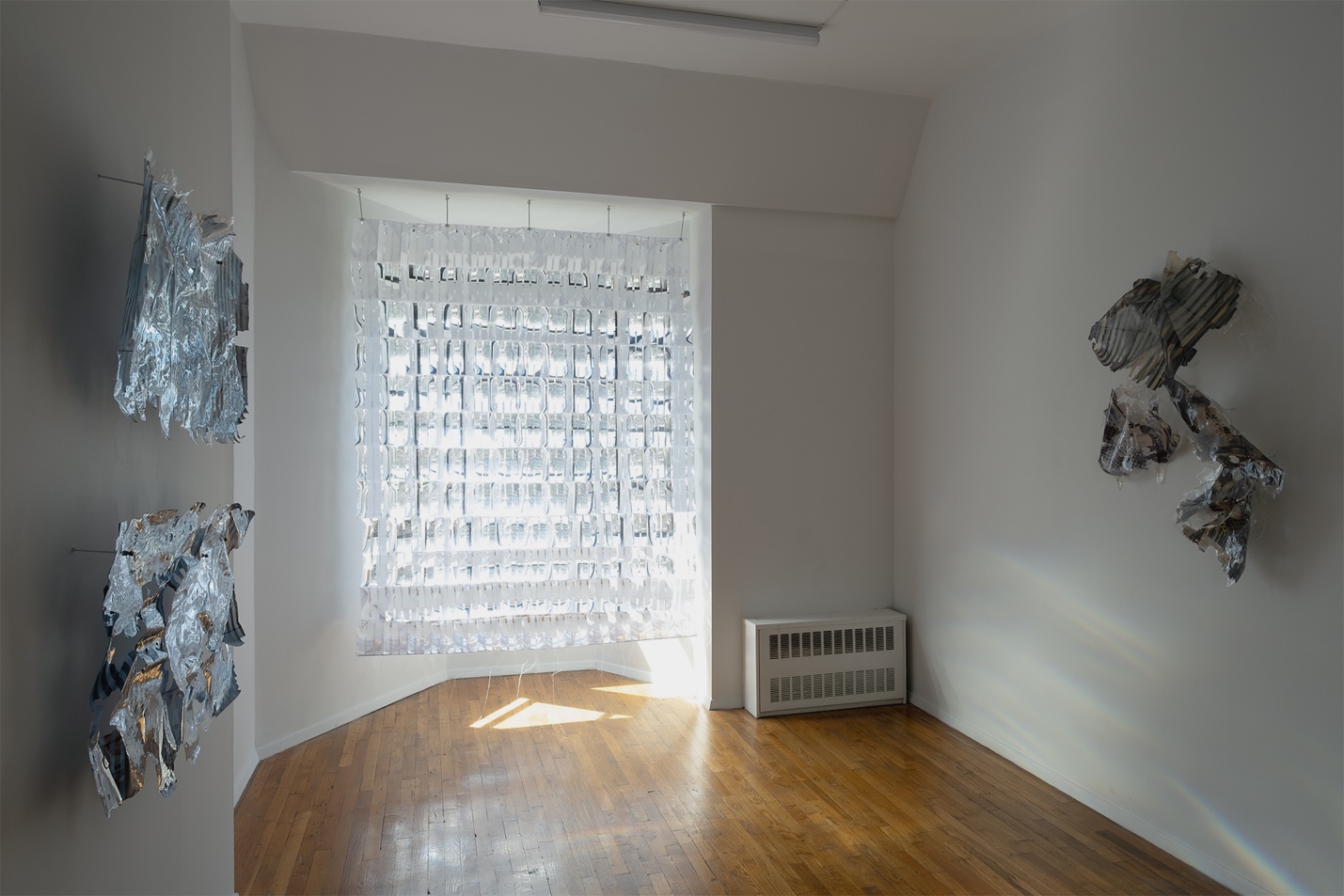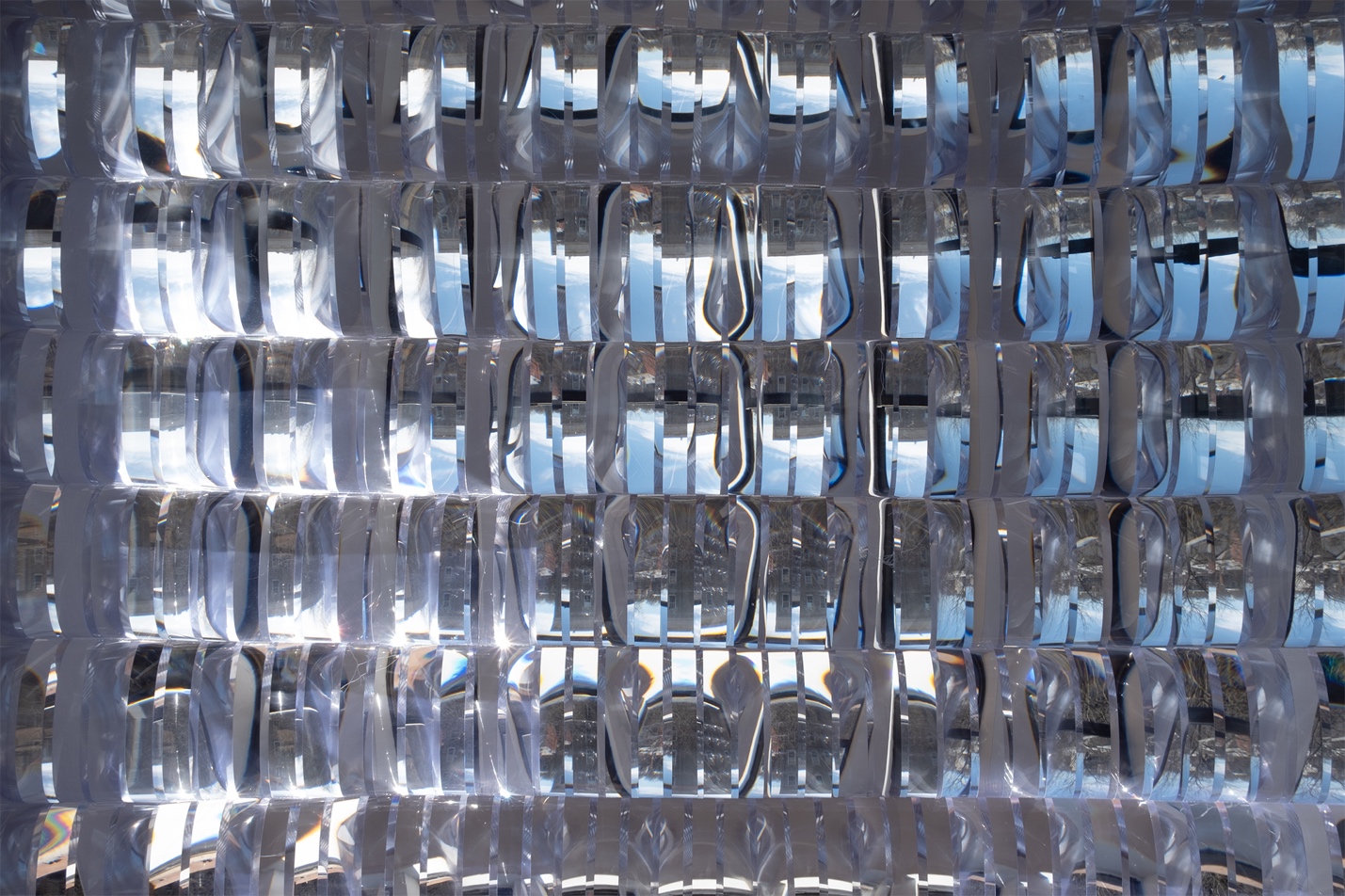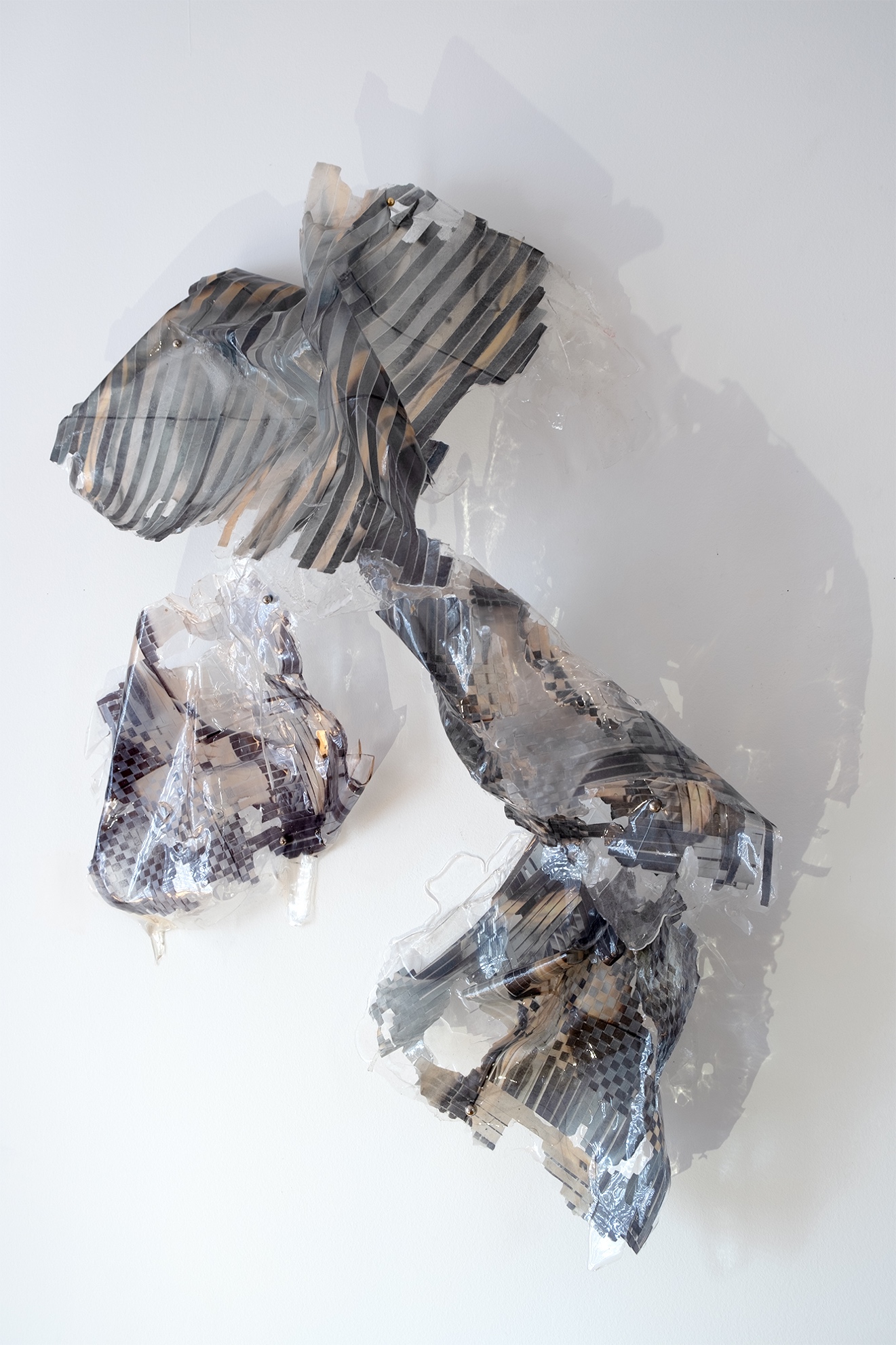Two Artists Investigate Light at Putty’s Coronation


In the current two-person show, Lucent Refractions, at the apartment gallery, Putty’s Coronation, both artists Juyon Lee and Maya Pollack contemplate our haptic experience of light, or how light alters our perception of space and time.
It was raining in Brooklyn. The wet ground reflected street lights, glimmering. Artist Maya Pollack’s work made of Fresnel lenses hanging behind the bay window of a fourth-floor apartment shone under the gloomy sky, refracting the room’s fluorescent light. Sets of rectangular lenses, sewn into one piece, comprise Pollack’s Horizon Quilt. The light going through the work intersects and bounces between curved lenses, akin to arthropods’ compound eyes, refracting slightly varied miniatures of the ever-changing surroundings. During the day, it multiplies the landscape visible from the window (but in an upside-down version): clouds, bare branches, and concrete buildings. The transparent tapestry moves with breezes, spreading undulating light blocks on the floor. When it is dark outside, part of the sculpture turns black; from a walking spectator’s view, labyrinthic light beams seem to swirl inside the lenses.

Fresnel lenses were first designed for lighthouses and are now mass-produced for lamps, cameras, and screens. In the 1976 film The Man Who Fell to Earth, the alien played by David Bowie installs a wall of TVs in his apartment—the TV screens become windows for him to see the unfamiliar outside world. Almost 50 years later, this film scene seems not to be surreal and eerie anymore. Though we barely watch TV today, the virtual window has been replaced by a myriad of screens, pervading our daily lives. Pollack’s work questions the illusiveness of using digital screens and the delineation of what we can perceive while centering our need to capture light, nodding to the worlds that have been embedded in the various iterations of Fresnel lenses.

Lee’s series Wet Photographs presented in the show mediates between the materiality of the image and immaterial agencies—time and light. In the introduction to her book The Virtual Window (2009), Anne Friedberg extends Wittgenstein’s remark “The limits of my language are the limits of my world” to “The limits and multiplicities of our frames of vision determine the boundaries and multiplicities of our world.” To escape from a fixed horizon, we start by realizing that our knowledge is not garnered solely from seeing but from experiencing with an intensive engagement of the body in temporal and spatial environments. Lee explores temporality and human perception through experimenting with physical materials, photos taken during her residency in Finland are cut into strips and woven into illusive images. Some of them are printed on thin, translucent hanji paper; with the material’s fragile, malleable nature, while being wetted by liquid resin, the images can be easily damaged, wiping out the attempt to archive time permanently in photography tradition. The cured resin gives Lee’s photography a sculptural form; springing up from the wall, the works encourage the kinesthetic participation of the viewer. Wet Photographs exemplifies Friedman’s thesis by showing that time is constantly in flux: the gravity of resin gradually changes the shape of the work; However, images of memory are sealed, they still melt and fade with the resin. Lee’s body of work encapsulates the way we sometimes sense memory and time—indeterminate, distorted, and partially discernible.
The apartment setting at Putty’s Coronation evokes a sense of intimacy, and the neat interior allows light to perform its fluidity on the walls. Without darkening the space, natural light, as well as reflections and refractions from both artists’ works mingle with one another, threading the passage of time with our spatial experience. To see is not simply to engage with one isolated phenomenon; it requires embodied and sensory experience. While sharing space with the artwork and interacting with light, we depart from the linear, objective perspective and replace it with a mobile, frameless way of seeing.
Lucent Refractions is open through April 7th, 2024 at Putty’s Coronation at 483 17th St, 4B, Brooklyn, NY 11215.
You Might Also Like
Growing Pains: Anna Ting Möller’s Symbiotic Sculptures
Israeli-born Sculptor Sheds Light on Mexican-American Border Crisis in New Exhibit
What's Your Reaction?
Yindi Chen is a curator and writer based in New York. Her research focuses on art practices related to the Anthropocene, ecofeminism, and queer ecology. She has contributed writings to The Art Newspaper China, C-print Journal, and Whitehot Magazine.

